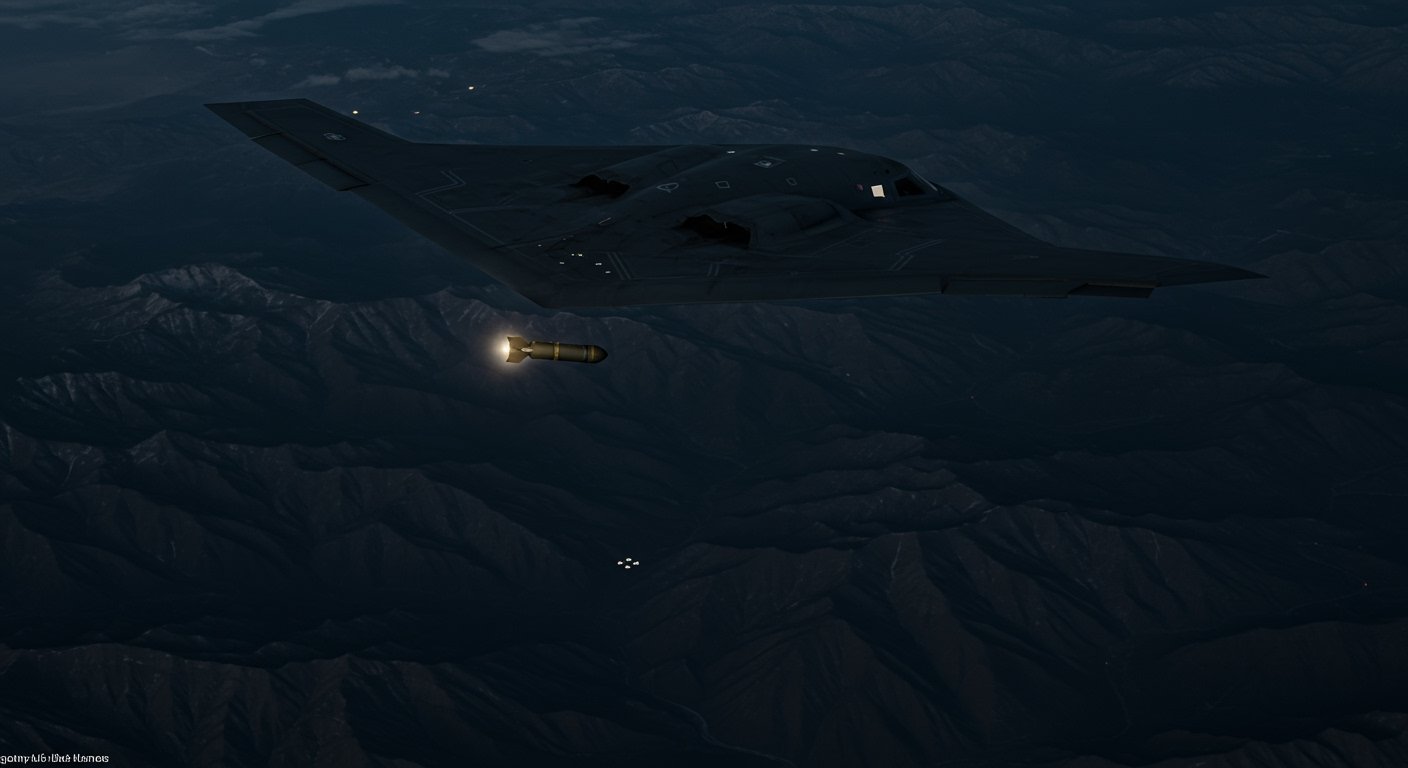WASHINGTON – The United States military launched targeted strikes against three pivotal Iranian nuclear facilities – Fordo, Natanz, and Esfahan – late Saturday evening, June 21, 2025, which corresponded to early Sunday local time on June 22, 2025. [1, 7]
President Donald Trump announced the military action, characterizing the operation as a “spectacular military success.” According to President Trump, the stated objective of these strikes was the destruction of Iran’s nuclear enrichment capacity, aiming to effectively end the perceived nuclear threat posed by the country. [7]
The Strikes
Details emerging from senior Defense Department officials confirm the deployment of three American B-2 bombers in the execution of the strikes. These strategic stealth bombers specifically targeted the Fordo facility with GBU-57 Massive Ordnance Penetrators (MOPs). The GBU-57 MOPs are a type of advanced “bunker-buster” bomb designed to penetrate deeply buried or hardened targets. [7]
Fordo is a particularly significant target, known to be a high-grade uranium enrichment facility. Its strategic location, buried nearly 300 feet beneath a mountain, makes it exceptionally difficult to neutralize with conventional munitions. The targeting of Fordo with GBU-57 MOPs underscores the depth and resilience of the facility. [7] Strikes were also reportedly carried out against the Natanz and Esfahan facilities, though specific details regarding the ordnance used at these sites were not immediately provided by officials. [7]
President Trump’s declaration of a “spectacular military success” suggests the United States believes the strikes achieved their immediate tactical goals regarding the targeted infrastructure and enrichment capabilities. [7]
Regional Context and Preceding Events
The US military action comes on the heels of a prolonged period of heightened tensions and military exchanges in the region. Notably, the US strikes follow more than a week of sustained operations by Israel. These Israeli strikes, which commenced around June 13, had reportedly targeted various Iranian military assets, including air defenses, missile capabilities, and earlier, nuclear enrichment facilities. [1, 7] The layered series of strikes signals a significant escalation in the efforts by regional and international actors to counter Iran’s nuclear program and military posture.
International Reactions and Diplomatic Fallout
Iran has reacted strongly to the United States’ direct involvement in military action. Official statements from Tehran warned of “everlasting consequences” and labeled the strikes as “outrageous.” Iranian authorities further described the US action as the initiation of a “dangerous war,” indicating a potential for significant retaliation and a broader conflict. [8, 14]
In a diplomatic response, Iran’s Foreign Minister is reportedly planning a meeting with Russian President Vladimir Putin. The stated purpose of this meeting is to coordinate a joint response to the US strikes, highlighting the convergence of interests between Tehran and Moscow in opposing perceived Western military actions in the region. [4]
Russia, for its part, publicly condemned the strikes, describing them as “irresponsible” and a “dangerous escalation.” This condemnation aligns with Russia’s established position opposing unilateral military interventions, particularly those targeting countries with which it maintains strategic ties. [4]
India’s Prime Minister, Narendra Modi, also weighed in on the escalating situation, issuing a call for “immediate de-escalation” following the US strikes. The statement from New Delhi underscores the international community’s concern regarding the potential for the conflict to widen and destabilize the broader Middle East and beyond. [1]
Impact in Israel
Amidst the ongoing conflict and exchanges of fire, Israel has reported impacts and casualties resulting from Iranian missile attacks. At least three impacts were reported, causing 23 injuries within Israel. The persistent threat of missile fire has also led to humanitarian consequences, with approximately 9,000 Israelis reportedly displaced from their homes due to the security situation. [1, 4]
Further adding to the somber situation, the bodies of three slain hostages were reportedly recovered from Gaza. The identities of the recovered hostages were confirmed as Ofra Keidar, Jonathan Samerano, and Shay Levinson. [4] Their recovery underscores the continued humanitarian crisis linked to the broader regional conflict, separate from, but occurring concurrently with, the escalation in strikes against Iran’s nuclear program.
Analysis and Outlook
The US strikes represent a significant and direct military challenge to Iran’s nuclear ambitions, distinct from preceding Israeli actions. While President Trump has declared the operation a success in degrading Iran’s capacity, Tehran’s strong rhetoric and stated intent to coordinate a response with Russia signals a potential for further, perhaps unpredictable, escalation. [7, 8, 14] The differing perspectives from international powers like Russia and India highlight the divisive nature of the action and the widespread concern over the trajectory of events in the Middle East following this direct military intervention. The situation remains highly volatile, with international observers closely watching for Iran’s next moves and the potential for a broader regional confrontation. [1, 4]





